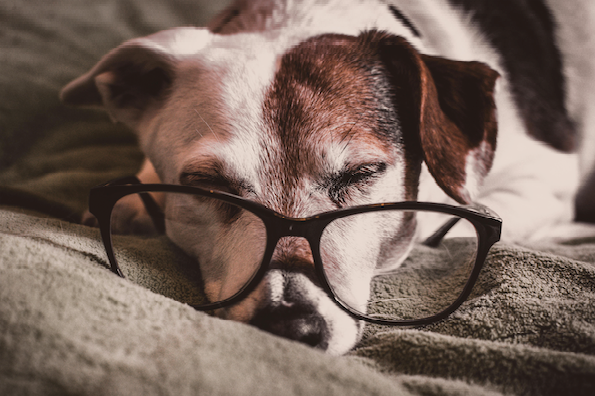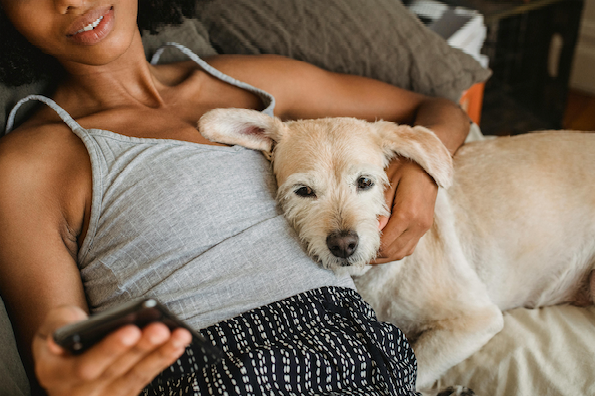Home Safety Precautions for Senior Dogs
Posted on

Having or welcoming a senior dog into your home brings unique challenges and joys. Our loyal companions require special attention as they age to ensure comfort and safety. This guide delves into essential safety precautions for senior dogs, focusing on creating a secure and loving environment. From modifying your living space for easy accessibility to understanding their changing needs, we’ll cover key aspects to help you be a responsible pet parent for your aging pet. Join us in exploring ways to care for these cherished family members in their golden years.
Understanding the Needs of Aging Dogs
As dogs enter their senior years, their needs evolve significantly. Recognizing these changes is vital to ensure their well-being. First, they’ll often experience reduced mobility due to joint issues like arthritis. Their senses, including sight and hearing, might also diminish, impacting their environmental interaction. You might also notice variations in moods and behaviors. Some dogs become less active or show signs of confusion.
Understanding these shifts is the first step in adapting their care. Importantly, increased veterinary check-ups are essential for monitoring age-related health conditions. Early detection of kidney problems or diabetes can greatly improve management and comfort. Just as imperative as physical health is emotional well-being. Senior dogs might seek more comfort and reassurance, requiring extra patience and attention from their caregivers. Thus, you’ll need to work a bit harder on your patience.

Caption: Senior dogs might not be as active, so catering to their new lifestyle is important.
At-Home Safety Precautions for Senior Dogs
Creating an accessible home environment is one of the major steps for accommodating the evolving needs of your aging dog. There are some basics you can do to make your living space more senior-dog-friendly. For instance, install ramps or steps to help your senior dog access higher areas like the bed or couch without strain. Consider placing non-slip mats in areas where they frequently walk to prevent slips.
Also, ensure your dog has a cozy, easily accessible bed. Opt for orthopedic beds placed in a warm, quiet part of your home, away from drafts. If your yard has stairs, add a ramp for easy access. Ensure the area is securely fenced, providing a safe spot for your dog to enjoy the outdoors. Place food and water bowls in easy-to-reach locations. Consider elevated bowls to reduce neck strain during meals. Likewise, for dogs struggling with incontinence, provide easily accessible potty areas. Pads or a doggy door leading to a secure outdoor space can help manage this common senior dog issue.
At the same time, if your current home isn't suitable for accommodating your needs as you age, particularly for the comfort of senior dogs, relocating to a more appropriate space might be the answer. While moving is never an easy decision or task, partnering with the right movers can make a significant difference. Best Movers in Florida, a renowned moving services provider, specializes in connecting clients with top-rated moving companies tailored to their specific needs. They offer a comprehensive range of services, from local to long-distance moves, ensuring a smooth and efficient relocation process. Understanding the unique challenges of moving with pets, they can recommend companies that prioritize the safety and comfort of your senior dogs during the move. Opting for a move with them could benefit you and your aging companion, turning a potentially daunting task into a manageable and positive experience.
Safe Outdoor Spaces for Senior Dogs
The outdoors can still be a source of joy for senior dogs, provided their safety is prioritized. To start with, ensure your yard is safely enclosed. Solid fencing prevents your dog from wandering and protects them from external threats. Bear in mind that flat, even terrain is best for older dogs. Avoid areas with steep slopes or rough surfaces that can be challenging for them.
Create shaded spots where your dog can relax without overexposure to the sun. That is crucial for preventing overheating, especially in older canines. Outdoor water stations are essential. Moreover, ensure fresh water is always available to keep them hydrated, especially on warm days.
Provide cushioned seating or grassy areas where dogs can lie down comfortably. That helps them enjoy the outdoors without lying on hard or cold surfaces. Remember that dogs can no longer tolerate the same environmental aspects as before in their old age. Depending on your climate, you might want to consider clothing like coats or sweaters.

Caption: A safe yard to play in is a good idea for everyone, but especially for older dogs
Preventing Injuries and Accidents
Minimizing risks of injuries and accidents is paramount in caring for senior dogs. Begin by replacing slippery surfaces with traction-friendly options. Rugs or non-slip mats can prevent falls, particularly on hardwood or tile floors. If your home has stairs, consider installing gates to limit access or provide non-slip pet steps to enhance safety.
In addition, adjust the layout to ensure the furniture isn’t an obstacle course. Keeping pathways clear reduces the risk of your dog bumping into things. Regularly inspect your garden for dangers like holes or sharp objects that could harm an older dog. If you live in an area with common sub-zero temperatures, ensure your pathways are defrosted.
Probably the most important aspect is maintaining your dog’s health. Regular vet visits help catch issues that could lead to injuries, such as poor vision or hearing loss. They can also recommend preventive treatment and vitamins and supplements.
Monitoring and Responding to Behavioral Changes
As dogs age, shifts in behavior are common. Being attentive to these changes helps you provide the right care and support. For instance, watch for signs like increased lethargy, confusion, or disorientation. These could indicate underlying health issues or discomfort in your senior dog. Older dogs might also exhibit anxiety or stress. Create a calm environment with familiar objects and routines to soothe them.
Acknowledge their physical limits. If they’re less active, provide comfortable resting spots and avoid forcing excessive exercise. Encourage soft, low-impact play to keep them mentally stimulated without straining their aging bodies. Remember that our companions don’t understand what’s happening to them. In the end, consult your vet if you notice significant behavioral shifts. Professional advice can help you understand and address any health-related causes.

Caption: The way you mitigate changes and adaptations to your home environment determines the well-being of your aging furry friend.
Final Thoughts on Safety Precautions for Senior Dogs
Implementing safety precautions for senior dogs in your home signifies your deep commitment to their well-being in their twilight years. Understanding and adapting to their changing needs creates a nurturing environment where they can thrive comfortably. Whether modifying your home for easier mobility, ensuring their safety outdoors, or being responsive to their behavioral shifts, each step you take makes a significant difference in their quality of life. Remember, these efforts reflect your love and care for your aging companion, making their senior years as joyful and comfortable as possible.
✍🏼 Natalie Taylor
Share this post
- 0 comment
- Tags: Blog, Blogs, Pet Safety, Safety tips, Seniors
